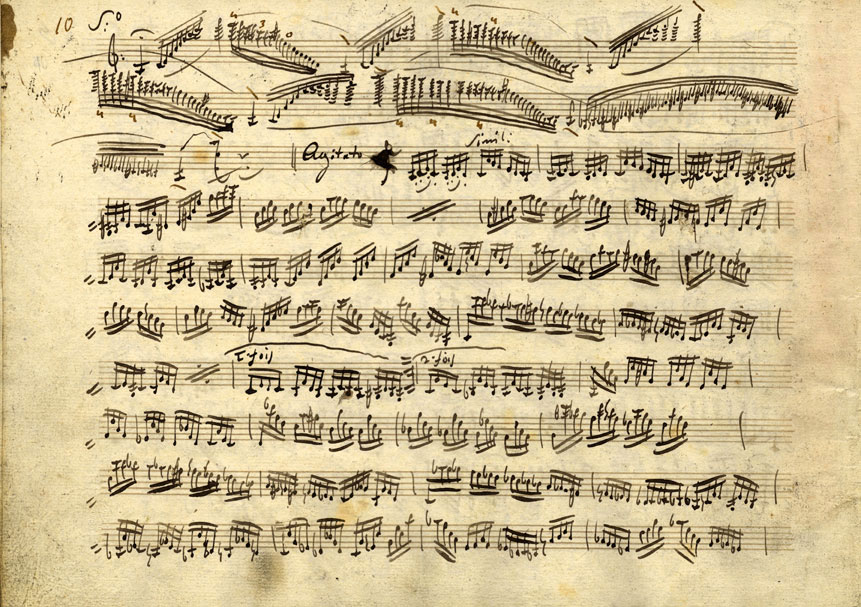
Introduction: I remember like if it was yesterday, when one day, when I was 12 years old, I was coming back from School, and I received from my parents the long expected book “Geigen und Geiger” (Violins and Violinists”) by Franz Farga. My eyes caught irretrievably the chapter about Paganini’s Life, which I would read with eager: I was so impressed that I even forgot to do my homework and practice my violin for my violin lesson next day…
That day was the beginning of a long road, which I am still walking along today. Who was Niccolò Paganini, this Magician, admired, feared and also hated by his contemporaries, Composers as Musicians? Schubert, Schumann, Liszt, Heine, Hoffmann, Grillparzer, Rossini, Brahms… the most important Romantic have been influenced by this violinist, before he suddenly had been considered as “too much virtuoso” for quite 200 years. A personality, covered with myths and legends, who changed the Music world for ever, and who appeared like a comet on the musicians firmament, leaving behind him a long and glowing firetail.
Which is the part of myth and which is reality? Here comes a first chapter, a kind of Introduction of a story which never will leave me alone…
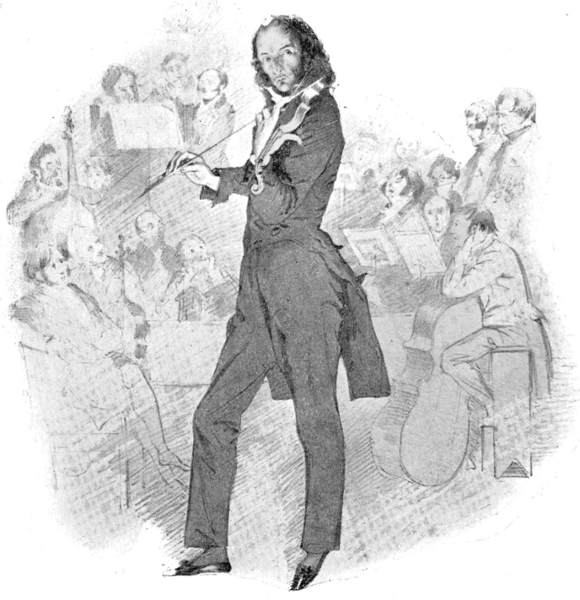
Paganini during a Concert in London, a drawing by McLise
“…The hall was crowded when Paganini went on stage on March 29th 1828 in Vienna.
The orchestra, composed by Vienna’s finest musicians, first played Beethoven’s Ouverture from “Fidelio”. After a short break, they started to play an introduction “Allegro Maestoso”, which slightly turned to a ritornello.
Only now Paganini appeared without any noise on stage, tall, lean like a Skeleton, with a long face, pale as death, an aquiline nose, sparkling eyes and soulderlong hair. As he bowed down you could imagine that his swinging arms would fall off his body. But the audience did not have time to make fun of this strange appearance. He already had placed the Bow on the strings… (…) and now the first fiery and intrepid sounds sounded through the hall. Immediately the magic happened.
Was it a violin which you could hear? Had we ever heard a violin playing before? The bow seemed to be endless, and the player let it swish down like a whip on the strings. Oktaves and tenth at an incredible velocity, polyphonic passages like sparkling pearls falling in a fresh shower, but each single note full and clear. Arpeggios, using only half the bow and still with the power of a huge harp, but most of all the furious passages of sixteenth notes, in which the first note was played pizzicato, while the second was played with the bow, and all this sounding like a foaming waterfall… the audience stopped breathing…”
Franz Farga, “Geigen und Geiger” – 1983
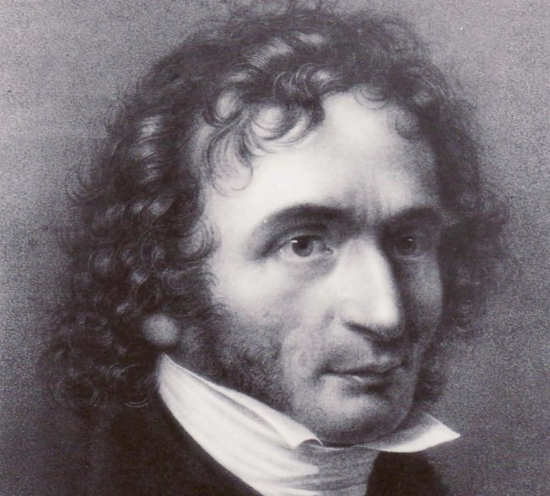
“Paganini” von Horace Vernet
This romantic and fanciful narration contains details and descriptions of contemporaries, who listened to one or more concerts of the famous Ligurian Maestro. In any case these are not stories invented by low-level journalists and romantic ladies, but important personalities of their time: Heinrich Heine for example writes over one chapter in his novel “Florentinische Nächte. Robert Schumann sells his watch and travels three days and three nights in a diligence in order to assist, as he describes, to an “unexplainable concert, in which we were chained by invisible chains”. Franz Schubert tells, he had “taken off his eyeglasses”, so he “could see the angels flying from the violin while Paganini plays”. Franz Grillparzer assists to the second Viennese Concert and dedicates a Poem to Paganini, Franz Liszt assists to any possible occasion, and finally transcripts freely several pieces by Paganini for piano solo. In shortest time, even the more sceptic among the audience have to admit that is it not another impostor, but that it’s e serious Phenomenon, who would change irremediably the art of playing violin, redefining it to its actual form.
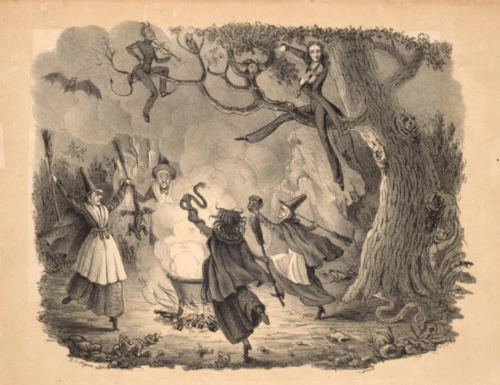
A caricature, showing Paganini playing for witches and devils. The legend was telling that he had sold his soul and his mothers soul (a very pious lady by the way) to the devil, in order to learn to play the violin the way he did.
Thousands of Legends were born around Paganini. It was told for instance, that Paganini had learned to play the violin in this incredible way, as he had spent 10 years in prison, after he had murdered his lover. Another legend told that he had sold his soul and his mothers’ soul to the devil (his mother was by the way a very pious woman). It was also told that he was a malicious businessman, fixing incredibly high prizes for concert entrances, but those who had told these stories forgot to mention how many charity concerts he did during his life, and how many poor people hospitals he had visited…
It also was told that he enjoyed playing the violin by night, and that he was extremely skinny because he was dying from tuberculosis, and had only a few month left, that he even was already death, and that this was the reason why he would arrive onstage with darkened eyeglasses, to hide the devil’s red eyes… the devil who had taken possession of his body and soul…
In reality, Paganini worked hard his whole life in order to grow these legends, this was part of his personality. He had spent most pf his time in Italy, excepted the last 12 years of his life, which were an European triumph, during which he literally attracted the crowds: everything was “à la Paganini” as several newspapers of his time have been reporting. Menù, dessert, hairstyles, clothes, caricatures… today we could compare the audiences monomaniac behavior to the enthusiasm for a star or a hashtag on twitter.
Only a few had the privilege to know Paganini closer, and understood what a modest person he was in reality, how much he got weary of keeping alive legends around his personality. Among his closest friends were the genoise lawyer Luigi Germi, with whom he kept letter contact for over twenty years, and no less than Gioacchino Rossini, with whom he also had collaborated in premiering several operas as a conductor.
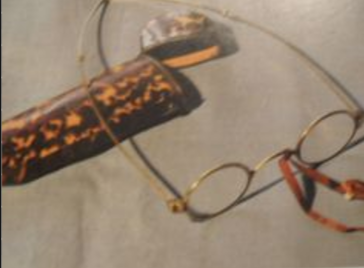
Paganini’s eyeglasses
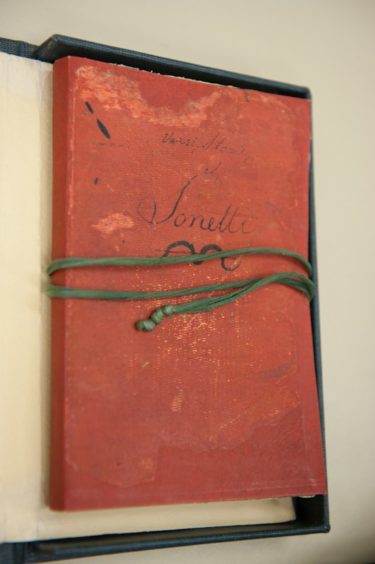
Paganini’s famous “agenda rossa” …
Paganini’s character was typically genoise, and he was naturally very suspicious and shy. Only a very few people were allowed to have a look behind the scenes, and like this only a few have been able to tell about his true nature: of his melancholy, his loneliness, his illness and his suffering, his unconditional love for his only son, called lovingly Achillino, of his generosity, his love for the Italian opera and the Bel Canto, chamber music – in particular Beethoven’s String Quartets – his interest for young composers and musicians, his attraction to good (maybe genoese) food, his continus preoccupation for his mother…
During the last 12 years of his life, the most glorious, Paganini paid with his health his enormous succès, playing almost 300 concerts a year. This is pretty incredible in a period of time, where no planes and no trains were existing.
Travelling always with him, his precious violin, a Guarnieri del Gesù of 1742, which he used to name “Il Cannone” (the cannon), a saddlebag full of scores and some souvenirs. A lot of things have been said about his “Agenda Rossa”, a booklet in which he wrote down everything, informations, notes, quotes, counts, but also some words and poems wrote by his dearest friends, which, worried, waited for his return home, some home remedies against simple diseases, cooking recipes from “home” and a tiny piece of lace of his mothers wedding dress. His eyeglasses, a travel suitcase, containing the essentials, during his travels from one city to another, without never giving himself some rest…
After his dead, myths and legends have dissimulated his work, and denigrated his music to simple, “ultra virtuoso” stuff without any real interest. More than 200 years later it’s time to separate legend and reality, and to give Paganini his deserved place in Music history back.
This article should be the first of it’s kind, and I will continue during the next months.
I would like to understand who was Niccolò Paganini exactly, more than just some historical dates and technical facts: he has been an important personality, who changed the violin, from its violinistic point of view as well from its technical point of view (for example when he worked with Jean Baptiste Vuillaume), genoese, romantic, inspired by Italian opera and Bel Canto, beginner of a revolution, instigator of his contemporaries, a real hero of the “Sturm und Drang” era, always looking out to reach the impossible perfection….




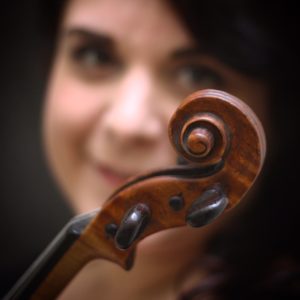





Leave a Comment